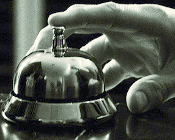What is a 410 Error?
A 410 error is generated when a web server gets a request for a URL that it knows does not exist and will not exist.
To quote the W3 HTTP Standards:
The requested resource is no longer available at the server and no forwarding address is known. This condition is expected to be considered permanent.
People might think that’s close enough to a 404 error, which is returned when the web server gets a request for a URL that cannot be found. The difference between a 404 error and a 410 error is very large however.
Lets use a grocery store as an example.
If you went into the store to get an item you think they might have but it turns out they don’t have it, that would be like a 404 error. You might look again when you have time, perhaps they will have the item soon?
If you went into the store and asked a clerk for the item and the clerk says “We do not carry that item in our stores.” that would be like a 410 error. You would not come back to the store expecting to find the item and leave upset each time.
Ideally the clerk in the store will have a good knowledge of the alternative products and suggest something that suits your needs, which is like a 301 forward, but not waste your time if there’s no solutions.
If the store is honest and doesn’t string you along with empty shelves that might get stocked, you will trust that store more and recommend it to people asking for a good store.
Why can’t I just make all not found items a 301 to the nearest match?

Lets go back to the grocery store and consider how we feel about going to purchase something you specifically want, but all they have is an alternative brand?
In fact you call them to see if they have the items you want and they just say “Sure come on down” but never actually have specifically what you want, sometimes the alternative isn’t even that close?
I don’t think you’d trust that store much and you’d probably complain that they are dishonest. Google feels the same way and if they get the feeling that a website is making up 301s for non-existent products/URLs you will get ‘Soft 404’ errors showing up in Google Webmaster Tools.
Why are 410 Errors important to SEO?
On a server level, every broken link on a website is a waste of resources. Why are search engines sending crawlers and visitors to a resource that does not exist? If the response isn’t “gone forever” the requests will likely keep happening.
The odds that someone following a broken link will interact with a 404 page and stay on a site are really low. If the visitor bounces back to the search and goes over to the competition that’s a terrible signal to let Google see.

Google is like a digital concierge, and like any guide, Google really likes to recommend good stores vs. ones with bad links.
In fact each time Google sees that a competing site solved the needs of the searcher, we can safely assume that any trust reward is given to the competing site, and the site that had the bounce might even see a trust deficit.
Building trust is a big concern with search engine rankings. Everything we can do to encourage search engines to trust a website has to fight against all the issues that cause Google to distrust sites, so it’s important to discover ways to limit the negatives and send positive trust signals.
So if you were in the shoes of Google and had to pick between suggesting a site that’s honest about pages that are gone forever, vs. a site that just lies saying “yeah we got that, come on down”, it’s pretty obvious which one will win.
Additional concerns of 410s
There is only one thing that can really ruin a 410 effort for a website trying to be honest. If there are external websites that keep making links to 410’d pages on your website Google will keep checking to see if you haven’t actually put a page up where you had a 410 entry previously.
Since Google is forced into doing these checks I can’t imagine that a website which has links to URLs that are 410 errors would be looked on favourably.
In fact since Google is constantly trying to find ways to evaluate websites I would not be surprised if having URLs on a website that lead to a 410 error is even more of a penalty than having URL that lead to 404 errors.
TL;DR: What is the solution?
Simply do two things:
- Make sure your site has a custom 410 page and when URLs are gone:
- The first response must be a 410 error, do not 301 to your custom 410 page.
- The 410 page should be very simple with options to find other items on your site.
- Regularly audit the links on your website:
- If links point to a 410/404 page, take them out or find a working alternative.
- If links point to a 301 page update your links to point to the final destination.
… That’s it! Just make sure you are being honest, keep your pages accurate/current, and Google will give your website the trust/traffic it deserves!
As with anything we blog about, Caorda’s experienced staff have services/tools that are designed to make our work fast and accurate.
If you need any assistance with 410 errors, 404s, soft 404s, or really anything web/SEO related, we’re here to help!
UPDATE: It’s come to my attention that the ‘410 for WordPress’ plugin works very well for tracking pages as you delete them, detecting 404s, and adding manual 410 entries. This is an excellent solution that I have to encourage because of how easy it is to implement.
